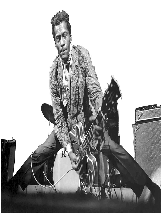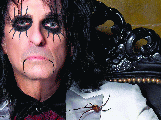- Parent Category: Reader's Corner
The Evolution of Music Part - XVII
Beatboxing is a form of vocal percussion which primarily involves the art of producing drum beats, rhythm, and musical sounds using one’s mouth, lips, tongue and voice. It may also involve singing, vocal imitation of turntablism, the simulation of horns, strings, and other musical instruments. Beatboxing today is connected with hip hop culture, being one of ‘the elements’, although it is not limited to hip hop music.
Vocal imitation of percussion sounds has existed for a very long time. One tradition is thought to have originated in India several thousand years ago: the tradition of bol, and the Chinese developed Kouji, a type of vocal performing arts. These had little or no relation with hip hop, however, and have no direct connection to modern Eastern Hip Hop. Some African traditions use performers’ bodies (clapping, stomping) to make musical sounds to maintain a steady musical pace. They made sounds using their mouths by loudly breathing in and out, which is done in beatboxing today.
Add a comment Read more: The Evolution of Music Part - XVII

 Nu metal (also known as new metal or nü metal) is a musical genre that emerged in the mid 1990s which fuses influences from grunge and alternative metal with funk music, hip hop and various heavy metal genres, such as thrash metal, industrial metal, and groove metal.
Nu metal (also known as new metal or nü metal) is a musical genre that emerged in the mid 1990s which fuses influences from grunge and alternative metal with funk music, hip hop and various heavy metal genres, such as thrash metal, industrial metal, and groove metal. Rhythm and blues, often abbreviated to R&B, is a genre of popular African American music that originated in the 1940s. The term was originally used by record companies to describe recordings marketed predominantly to urban African Americans, at a time when “urbane, rocking, jazz based music with a heavy, insistent beat” was becoming more popular.
Rhythm and blues, often abbreviated to R&B, is a genre of popular African American music that originated in the 1940s. The term was originally used by record companies to describe recordings marketed predominantly to urban African Americans, at a time when “urbane, rocking, jazz based music with a heavy, insistent beat” was becoming more popular.
 to refer to most types of Jamaican music, the term reggae more properly denotes a particular music style that originated following on the development of ska and rocksteady.
to refer to most types of Jamaican music, the term reggae more properly denotes a particular music style that originated following on the development of ska and rocksteady. early 1970s, which was performed by singers and musicians who wore outrageous clothes, makeup and hairstyles, particularly platform - soled boots and glitter. The flamboyant costumes and visual styles of glam performers were often camp or androgynous, and have been connected with new views of gender roles. Glam rock visuals peaked during the mid 1970s with artists including David Bowie, T. Rex, Roxy Music and Gary Glitter in the UK and New York Dolls, Lou Reed and Jobriath in the US.
early 1970s, which was performed by singers and musicians who wore outrageous clothes, makeup and hairstyles, particularly platform - soled boots and glitter. The flamboyant costumes and visual styles of glam performers were often camp or androgynous, and have been connected with new views of gender roles. Glam rock visuals peaked during the mid 1970s with artists including David Bowie, T. Rex, Roxy Music and Gary Glitter in the UK and New York Dolls, Lou Reed and Jobriath in the US.